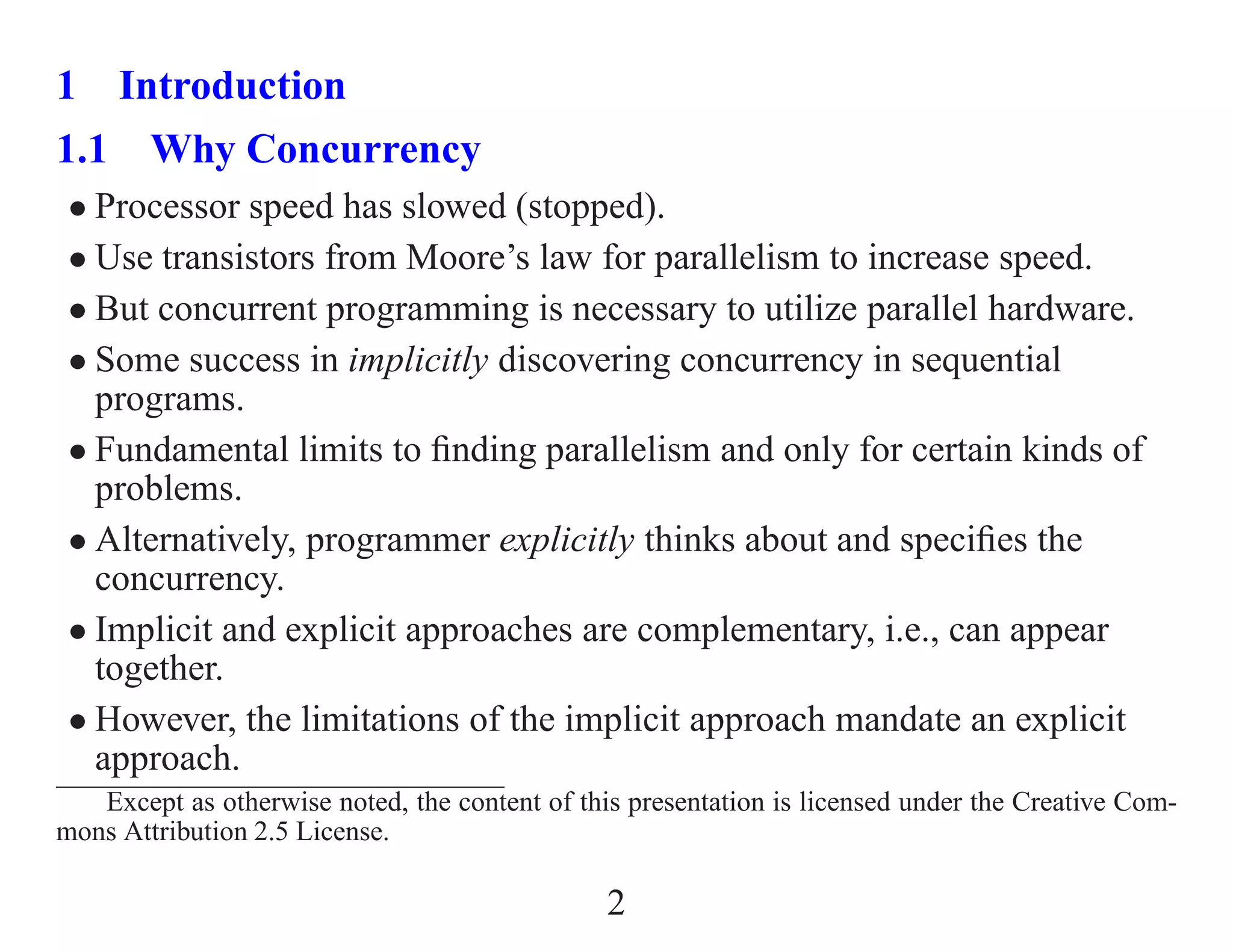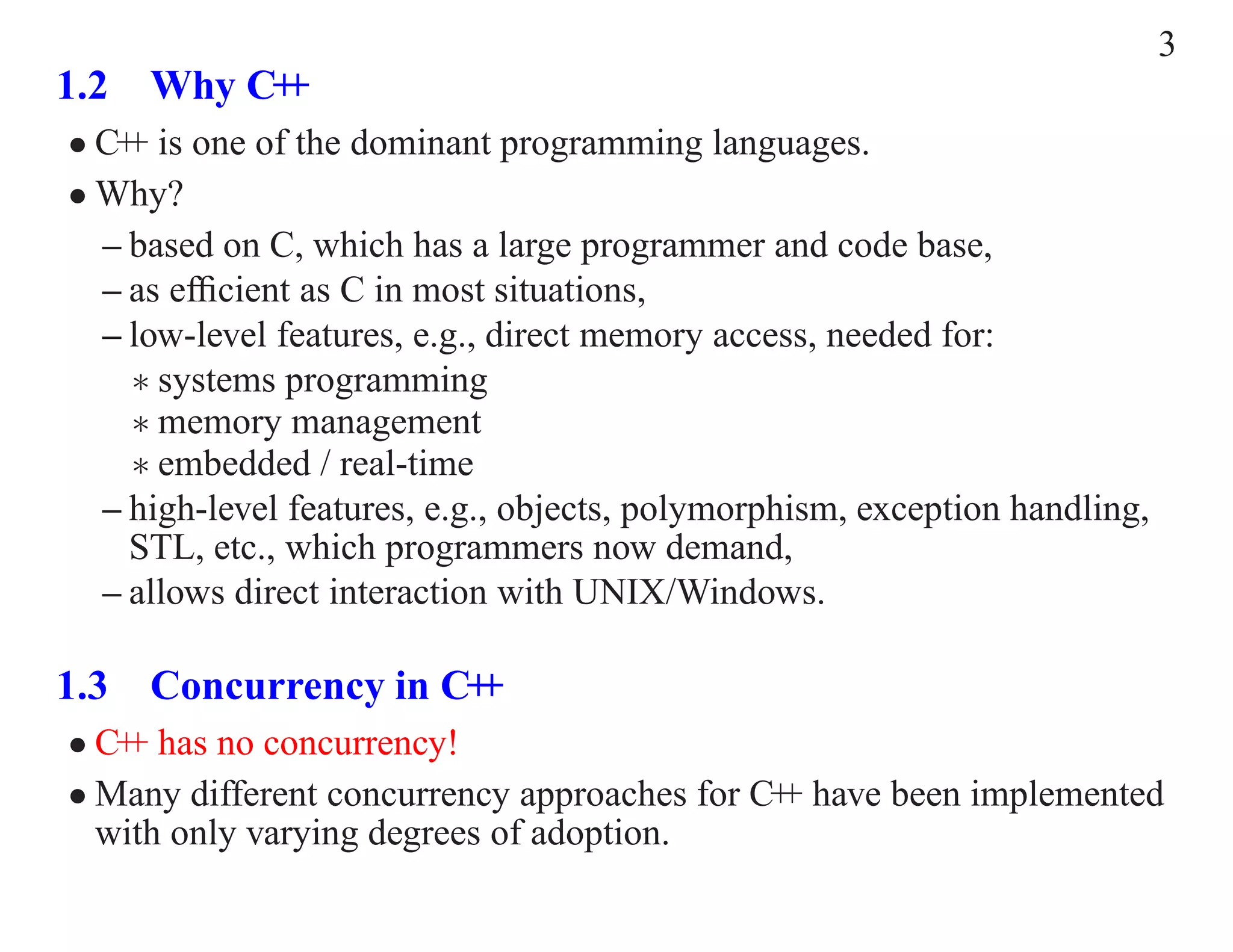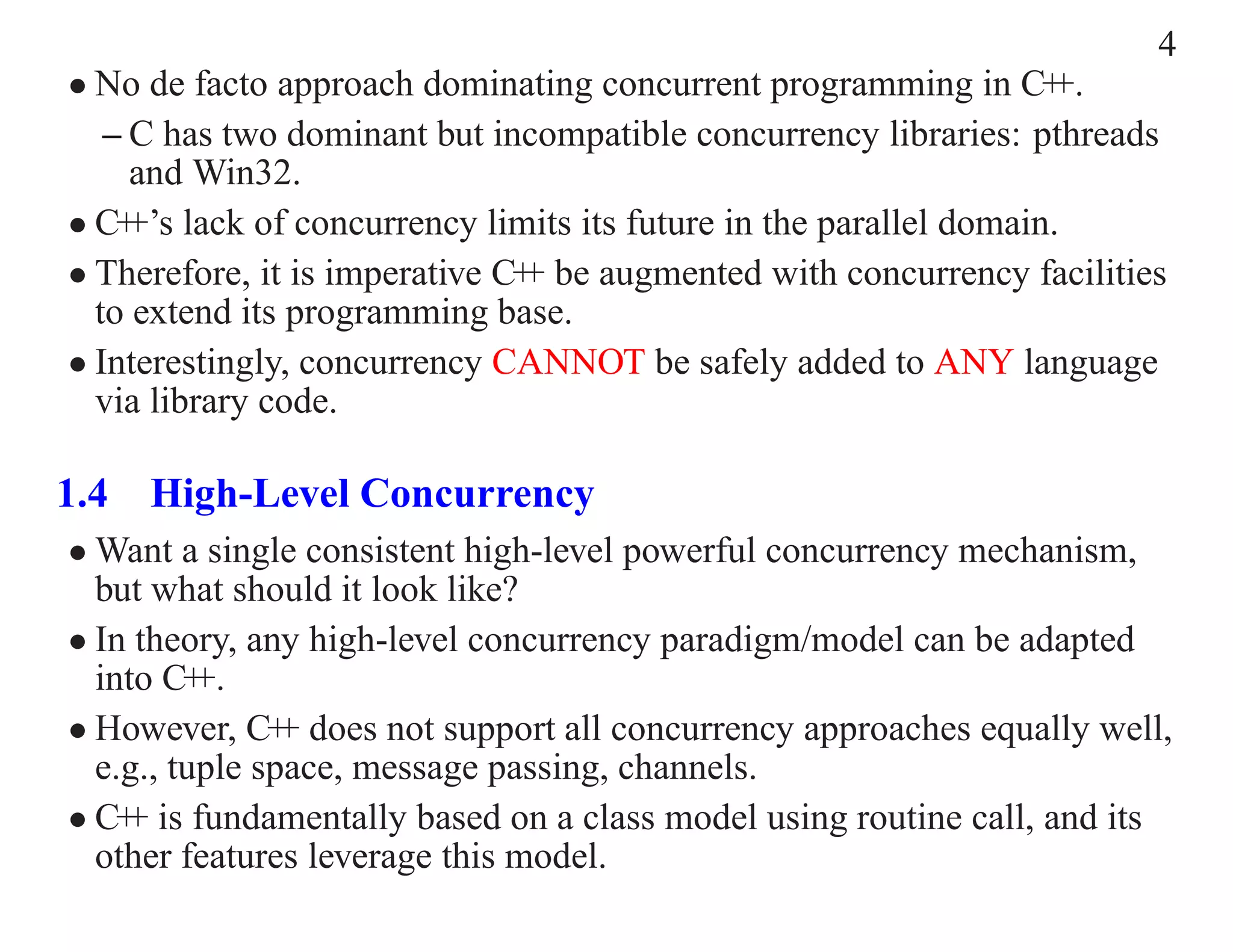This document discusses concurrency in C++. It notes that while C++ is commonly used, it lacks built-in concurrency support. To take advantage of parallel hardware, concurrency must be explicitly specified by programmers. The document proposes augmenting C++ with a unified concurrency mechanism called μC++ that tightly integrates advanced control flow using threads represented as objects. It would use mutexes for synchronization and focus on method calls for communication to match C++'s design. The outline describes how coroutines, threads, locking, errors, monitors, and tasks would be addressed.





